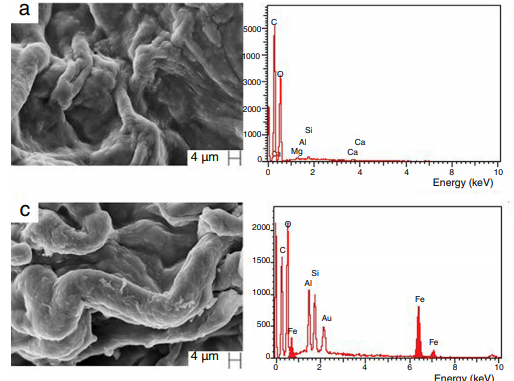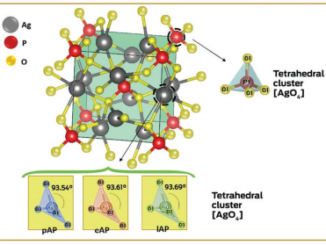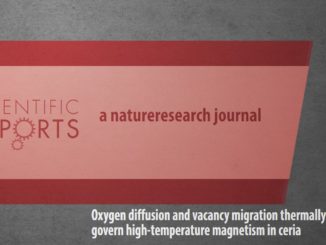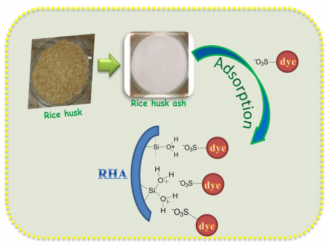
Sisal cellulose and magnetite nanoparticles: formation and properties of magnetic hybrid films
Abstract: In this study, sisal cellulose/magnetite-nanoparticle (Fe3O4 NPs; 0.5,1.4, and 3.0 g L-1) hybrid films (denoted as FCFe0.5, FCFe1.4, and FCFe3.0, respectively) were prepared by casting, using the solvent system LiCl/DMAc. Sisal was chosen as a cellulose source because it is a fast- growing plant, in contrast to the long cycle of woody trees, and Brazil accounts for most of the sisal produced in the world. Fe3O4 NPs were chosen owing to their excellent properties (superparamagnetic behavior at room temperature, high chemical stability, and low toxicity). The synthesized magnetite NPs (coated with oleic acid and oleylamine to prevent agglomeration during synthesis) were spherical with an average diameter of 5.1 +/- 0.5 nm (transmission electron microscopy analysis; TEM). X-ray diffraction analysis showed that the NPs were satisfactorily incorporated into the cellulose films (as confirmed by TEM) and that their presence favored the formation of cellulose crystalline domains. FCFe1.4 and FCFe3.0 exhibited higher tensile strengths (14.3 MPa and 12.1 MPa, respectively) than the neat cellulose film (9.9 MPa). The moduli of elasticity of FCFe0.5, FCFe1.4, and FCFe3.0 were 1650, 1500 MPa, and 780 MPa, respectively, lower than that of the cellulose film (1860 MPa), indicating that the incorporation of NPs in the cellulosic matrix decreased the films’ stiffness. Hybrid films exhibited high magnetizations at 300 K, i.e., 23.0 emu g(-1) (FCFe0.5), 31.0 emu g(-1 )(FCFe1.4), and 37.0 emu g(-1) (FCFe3.0), as well as no magnetic hysteresis and remanent magnetization (Mr) null, namely, a superparamagnetic behavior at room temperature. The results obtained suggest several applications of hybrid films based on cellulose and magnetite, such as biomedical applications, miniaturized electronic devices, and advanced catalysis. (C) 2019 The Authors. Published by Elsevier B.V.
Author(s): Furlan, DM; Morgado, DL; de Oliveira, AJA; Faceto, AD; de Moraes, DA; Varanda, LC; Frollini, E
JOURNAL OF MATERIALS RESEARCH AND TECHNOLOGY-JMR&T
Volume: 8 Pages: 2170-2179 Published: APR 2019
PDF: Sisal cellulose and magnetite nanoparticles formation and properties of magnetic hybrid films
DOI: 10.1016/j.jmrt.2019.02.005




